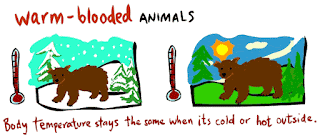Rodzaje Zaimków
Zaimki Rzeczowne
odmieniają się przez przypadki
ja, ty, kto, co, ktokolwiek, cokolwiek, ktoś, coś, nikt, nic
Zaimki Przymiotne
odmieniają się przez przypadki, liczby, rodzaje
ten, taki, ów, czyj, który, ktokolwiek, jaki bądź, nikt, mój, twój, swój
Zaimki Liczebne
odmieniają się przez przypadki i rodzaje
tyle, ile, ileś
Zaimki Przysłowne
są nieodmienne
jak, gdzie, skąd, kiedy, którędy, dlaczego, tak, tu, tutaj, wtedy, jakoś, gdzieniegdzie, kiedykolwiek, nigdzie, nigdy
Funkcje Zaimków
Zaimki Osobowe
Nazywają osoby (przedmioty), o których była mowa wcześniej.
To właśnie on odkrył Amerykę.
Ja pierwszy raz usłyszałem o wyprawie Kolumba, ale wy znaliście już tę historię.
Niektóre zaimki w niektórych przypadkach gramatycznych mają dwie formy:
|
|
Dłuższa
|
Krótsza
|
ja
|
Celownik
|
mnie
|
mi
|
ty
|
Celownik
|
tobie
|
ci
|
ty
|
Dopełniacz
Biernik
|
ciebie
|
cię
|
on
ona
|
Dopełniacz
Dop
|
Jego,
niego,
niej
|
go
jej
|
on
ona
|
Celownik
|
jemu,
niemu,
niej
|
mu
jej
|
Form krótkich nie używa się początku zdania.
Formy dłuższej używamy:
- na początku zdania, np. Mnie nie trzeba tego powtarzać.
- w przeciwstawieniach, np. Widziałem ciebie, a jego nie zauważyłem.
- w połączeniu z przyimkami, np. Zbliżał się ku niemu w błyskawicznym tempie.
Zaimki Wskazujące
Wskazują na osobę, rzecz, cechę, miejsce, ilość, o których była mowa wcześniej lub wynikają, np.
Tam! - krzyknął - wskazując na majaczący w oddali ląd.
Ta ziemia została nazwana Hispaniolą.
ta
Biernik - w jeżyku pisanym forma
tę, np.
Pokaż tę mapę.
W języku mówionym - również forma
tą
Narzędnik (kim? czym?) -
tą, np.
Interesował się tą mapą
to
W odniesieniu do rzeczowników rodzaju nijakiego tylko forma
to, np.
to zdjęcie, to stanowisko.
Połączeniu zaimków
ilu? - tylu używamy:
W odniesieniu do rzeczowników osobowych rodzaju męskiego, np.
Ilu wynalazcom udało się stworzyć wehikuł czasu? Tylu próbowało.
Połączenia zaimków
ile? - tyle używamy:
W odniesieniu do pozostałych rzeczowników, np.
Ile czasu zajęło przygotowanie projektu? Tyle pracy włożono w realizację pomysłu.
Zaimki Pytające
Służą do tworzenia pytań.
Ile wysp odkrył Kolumb?
Gdzie zatrzymali się podczas pierwszej wyprawy?
Kogo spotkali na wyspie?
Zaimki Względne
Służą do łączenia części zdań (wprowadzania zdań podrzędnych).
Nie wiedzieli, kiedy powrócą do kraju.
Odkryli miejsca, do których szybko zaczęli docierać inni.
Zaimek
jaki:
Pełni funkcję uogólniającą, wskazuje na pewne cechy przedmiotu; w zdaniu nadrzędnym może wtedy wystąpić zaimek
taki (taka, takie), np.
Otrzymał (taką) nagrodę, o jakiej mu się nie śniło.
Zaimek
który:
Pełni funkcję wyodrębniającą, wskazuje na sam przedmiot; w zdaniu nadrzędnym może wtedy wystąpić zaimek
ten, (ta,to), np.
Rozmawiał z (tym) naukowcem, który odkrył zakrzywienie czasu.
Zaimki Dzierżawcze
Informują, do jogo, czego coś lub ktoś należy.
Jego załoga liczyła około czterdziestu ludzi.
Ich los nie jest nam znany.
Zaimków
mój, twój, wasz, nasz, jego, jej, ich
Wykonawca czynności nie jest właścicielem przedmiotu, np.
Przedstawił jego obliczenia. Zaprezentował jej poglądy. Skrytykował wasze zachowanie.
Zaimki Nieokreślone
Wskazują na osobę, rzecz, cechę, miejsce, ilość, które nie są dokładnie określone.
Coś sobie przypomniał.
Gdzieś już słyszał o zamorskich krajach.
Zaimek Zwrotny
Informuje, że czynność wykonywana przez jakąś osobę skierowana jest właśnie na nią.
Nie dowierzał sobie.
Widział się w roli odkrywcy.











































